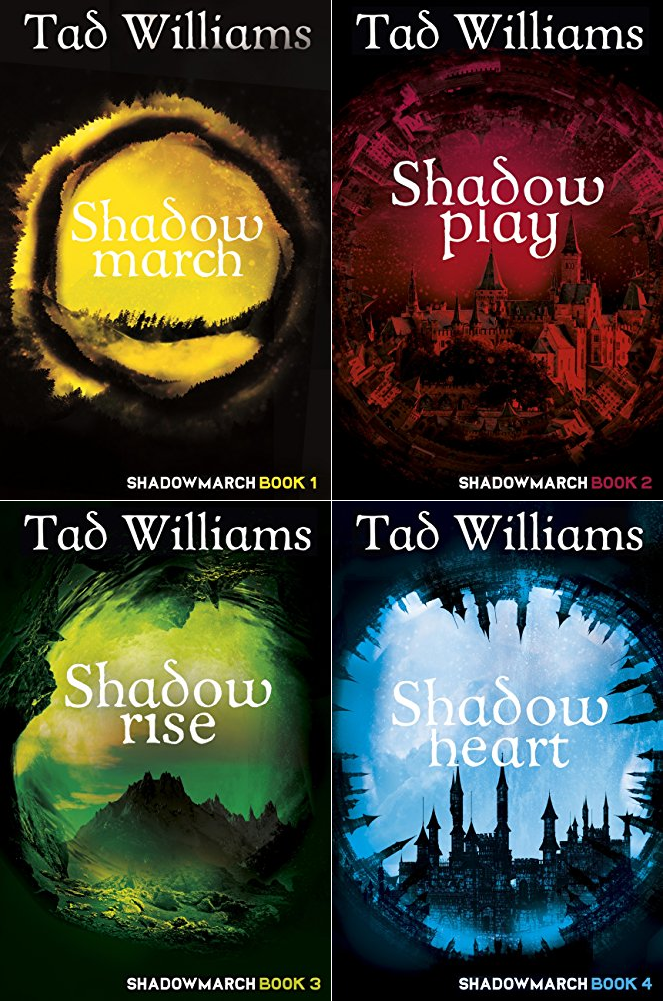Shadow Puppets

That’s it, the first epic series of the year is now read and done. I’m experiencing a feeling of mild bereavement that I won’t be spending my evenings in the company of the characters from Shadowmarch any longer. As I said in a recent post it’s been quite a while since I got my teeth into a full series, last time I read one back to back (the First Law Trilogy), it actually inspired me to start this website, so blame Joe Abercrombie if you’re not a fan. Years (decades?!) of scraping around on the internet looking for some sensible advice on what to read was a factor as well, there’s only so many Terry Goodkind versus Robert Jordan arguments a person can take (‘this is better than that and you’re a moron if you don’t agree’ is a common phrase). I’m hoping that what I’m building here will be a much more inclusive type of website, a website which says, “Hey, if you liked that, then you might like this. Oh and by the way reading this doesn’t automatically exclude you from liking this over here too” (Apart from Terry Goodkind, only morons like his stuff. Kids).
I chose Shadowmarch to read because I started last year with Memory, Sorrow and Thorn, as you can read here, I was a fan. I hoped that Shadowmarch would prove an equally worthy diversion to get me through the cold months, was I correct? Read on to find out…
Shadowmarch at first exhibits a number of familiar traits for any readers of Memory, Sorrow and Thorn. Firstly they are both imbued with an ambiance which is unmistakeably Tad Williams, there is something in the DNA of his writing which creates a soft focus haziness. Events are centred on a castle, inhabited by humans during the period of the story, but previously home to a much longer lived race. There is a power vacuum created by the absence of the long serving monarch who makes their home in the aforementioned castle, due to death in MST and capture in Shadowmarch. In both series the immortal races have retreated into hiding following bitter wars with mankind, there are also similarities between the immortal races in both series, and particularly their fondness for the use of the apostrophe in nomenclature. However, don’t be misled by the superficial resemblances, these are two very distinct stories and are both worth the considerable outlay of time to read.
Like any major fantasy series Shadowmarch has a pretty complicated backdrop, in short: Shadowmarch
is named eponymously for the Castle around which it centres, its current ruling family feature widely in the storyline, but there are several further perspectives and the story encompasses a wide range of events. Religion is the key driver behind the events depicted, while there are various schisms they broadly recognise the same deities. Unusually it is not the disagreements between these various factions which creates the tension, instead it is an indirect result of a war or theomachy between the actual Gods which, for the human characters at least, is lost in the mists of time. In present events the resulting effect of this war are an ingrained hatred of Humans by the Qar (that long lived race I mentioned earlier, a single name implies one race but there are actually a huge number of sub-races that fall under that umbrella), this is reflected right back at them by mankind. The usual human propensity for violence and an ability to breed in far greater numbers has driven the Qar into the far North, and compelled them to create a magical barrier known as the Shadowline or Mantle depending on your point of view. The human races having taken over the majority of the Northern continent have developed schisms of their own, for the most part they rub along relatively peacefully, on the Southern continent though there is a self-styled God-King (the Autarch) who doesn’t play so nice, he has risen to power and dominion over all his neighbours, a situation he would like to recreate in the Northern continent.
The story unfolds via a variety of viewpoints, representing most of the major perspectives described above. These individual narratives all serve to reveal elements of the overarching storyline, like a good mystery novel not all things become clear until near the end of the series. Some of the early assumptions I made regarding the proverbial lay of the land were a little wide of the mark, others missed the target area altogether. There is an awful lot going on under the hood here, the character list provided at the end of the book is testament to the complexity of this work, not only is there a large number of character but some of them have multiple names, one of the Gods is referred to by eight different names (keep this list to hand, it will make life a lot easier). This complexity never spiralled into the realm of bewildering (this from someone who just couldn’t follow ‘A Brief History of Seven Killings’!), yes there are a lot of characters but not all of them are that significant and there is enough separation in the early parts of the series to ensure that the significant players are cemented in your consciousness.
If you’re a fan of epic fantasy in the slightly less gritty mould, Shadowmarch should definitely be in your to read pile. Having now read this and Memory, Sorrow and Thorn, it’s a relief to know that there is still another completed series by Tad Williams to read, ‘Otherland’, I’ll probably save that for next winter, it can’t come soon enough now!
focus